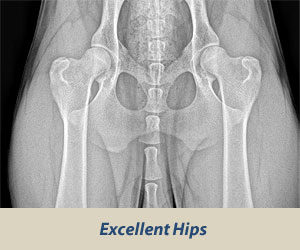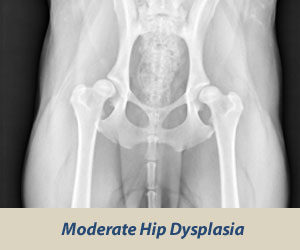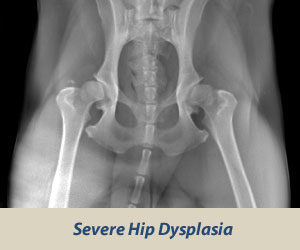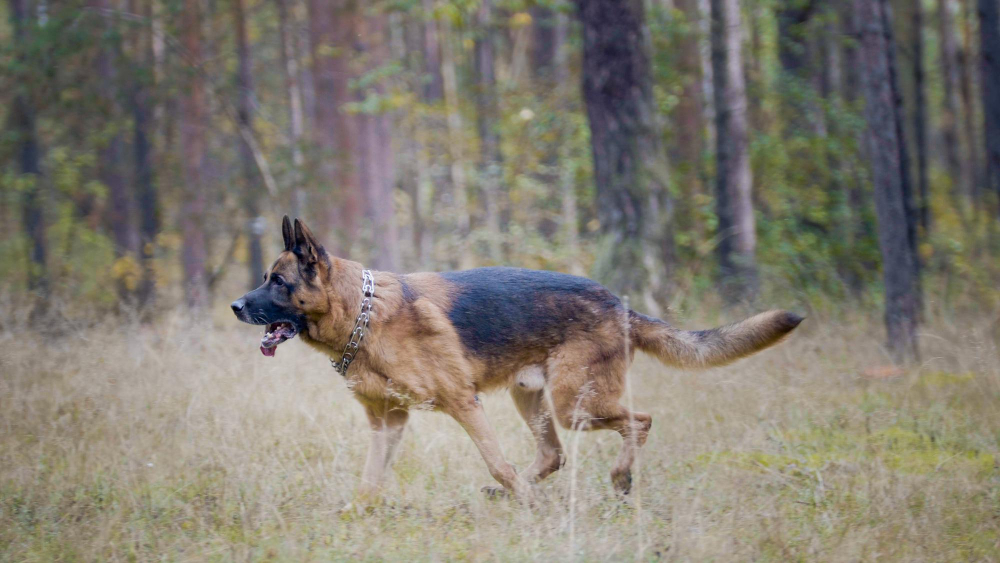Disclosure: This post contains affiliate links. We may earn a small commission if you decided to make a purchase, at no additional cost to you.
Hip dysplasia is a congenital disorder wherein the hip sockets are too loose and the femur causes damage. It can develop by as early as 4 months and worsen over time. Any German Shepherd owner dreads the idea of seeing our four-legged friends suffer, that’s why dealing with a hip dysplasia diagnosis can be daunting.
Hip dysplasia is a common joint condition experienced by large dogs like German Shepherds, which is usually caused by a combination of genetic and environmental factors. If untreated, it can lead to osteoarthritis of the hip joint, which can affect your dog’s quality of life, causing chronic lameness, pain, and muscle atrophy.
19% of German Shepherds will develop hip dysplasia, but some cases are worse than others.
OFA.org (Orthopedic Foundation for Animals)
In this article, we will only give you the most important information you will need when it comes to understanding hip dysplasia as a German Shepherds owner. We will start off with why are GSDs more prone to hip dysplasia, how it affects a GSD’s life, how bad it can get, and eventually what you can do to care for your dog if diagnosed with HD.
This post is a must for any current or potential GSD owners. We promise we will only include just enough action items for you to check off with, and leave out the diagnosing and treating parts of hip dysplasia for experts to save you time (you can find more details on websites like OFA.org). That said, nothing in this post is or should be considered, or used as a substitute for, veterinary medical advice, diagnosis or treatment.
What is hip dysplasia?
Hip dysplasia (or Canine hip dysplasia) typically develops because of an abnormally developed hip joint, but can also be caused by cartilage damage from a traumatic fracture.

With cartilage damage or a hip joint that isn’t formed properly, over time the existing cartilage will lose its thickness and elasticity. This breakdown of the cartilage will eventually result in pain with any joint movement.
Many factors play a role in developing hip dysplasia: genetics, rate of growth, nutrition, body weight, traumatic fractures, and environmental conditions. (Source: OFA.org)
If untreated, it can lead to osteoarthritis of the hip joint, which can affect your dog’s quality of life, causing chronic lameness, pain, and muscle atrophy.
What are the main causes of hip dysplasia?
Hip dysplasia is hereditary. And it’s especially common in larger dogs, like the Great Dane, Saint Bernard, Labrador Retriever, and German Shepherd Dog.
Factors such as excessive growth rate, types of exercise, and improper weight and nutrition can also magnify this genetic predisposition. (Source: AKC)
In some cases, a hip injury can also trigger the development of dysplasia. Because German Shepherds are such active dogs, they are at a higher risk of incurring these injuries.
Why are German Shepherds prone to hip dysplasia?
While it’s true that any dog can be affected by hip dysplasia, it is most commonly seen in medium, large, and giant breeds.
Genetics also play a crucial role in increasing the risk of hip dysplasia in dogs. Nearly 20% of German Shepherds suffer from the condition and the probability is even higher for dogs whose parents had hip dysplasia.
Another reason is bigger dogs put more strain on their joints and often go through a period of fast growth when they’re puppies. The pressure on the joints can manifest itself to the development of hip dysplasia.
As mentioned above German Shepherds are such large and active dogs, they are at a higher risk of developing hip dysplasia that is triggered by potential hip injuries.
At what age do German Shepherds develop hip dysplasia?
The primary cause of hip dysplasia is genetics.
Statistics suggest that a puppy born to parents with hip dysplasia is twice as likely to develop the condition. Therefore, if you are considering bringing a GSD puppy home, it’s always important to look for reputable breeders.
While some puppies start showing clinical signs of hip dysplasia as early as a few months old, most do not until 1 to 2 years of age.
Does a German Shepherd’s hip dysplasia shorten its lifespan?
In most cases, hip dysplasia doesn’t shorten a dog’s life span.
But, when left untreated, it will progressively affect their quality of life. Pain and swelling will undoubtedly lead to a decreased range of motion, stiffness, and chronic pain.
That is why early detection, treatment options, lifestyle changes and management can make an enormous difference.
What is the worst-case scenario for a German Shepherd with hip dysplasia?
Hip dysplasia can present itself in phases, depending on how badly the joint is damaged.
While the OFA classifies hips into seven different categories: Excellent, Good, Fair (all within normal limits), Borderline, and then Mild, Moderate, or Severe. The last three are considered dysplastic. Let’s take a closer look:
Mild hip dysplasia is where the ball is partially out of the socket causing an increased joint space. The socket is usually shallow only partially covering the ball.

Moderate hip dysplasia describes a hip in which the head of the ball barely rests inside the socket, which can lead to pain, joint degeneration, and osteoarthritis.

Severe hip dysplasia is where the head of the femur may be barely within the socket or completely dislocated from the joint. There are arthritis and degenerative bony changes present. Once this happens, the condition is irreversible. Severe cases may require surgical treatment.

How to tell if your German Shepherd has hip dysplasia?
It is important to recognize symptoms of hip dysplasia as early as possible.
These symptoms can vary from dog to dog, and some dogs/puppies may show no symptoms at all until the condition has progressed. Keep an eye out for the following:
- Limping, waddling, or unsteadiness when walking
- Swinging both its legs forward instead of moving them independently. (in a “bunny hop” manner)
- Clicking sound when walking or running
- Difficulty getting up, lying down, or going upstairs
- Narrowing hips when seen from behind
- Reduced activity
The most effective way to diagnose hip dysplasia is with a radiograph or X-ray.
Your veterinarian will x-ray your dog’s hips to determine the degree and severity of hip dysplasia. Only then they’ll be able to determine the best course of treatment for your dog.
How to prevent German Shepherd Hip Dysplasia?
Hip Dysplasia is a common condition in large dogs due to their weight. There is no magic formula to prevent a GSD from getting it. But if little things can add up, here are the things you can do to lower the chance:
1. Choose a reputable breeder
German Shepherds are prone to hip dysplasia due to genetic conditions. The best way to avoid inherited hip dysplasia is to do your research and choose a reputable breeder who screens for Hip Dysplasia.
Why? Reputable breeders are so concerned about their dogs’ health that they usually offer health guarantees. A reputable breeder will be able to offer you information regarding the genetic testing of the parents and be able to offer certification of hips, elbows, eyes, and knees.
2. Take on regular low-impact exercise
Regular low-impact exercise, like walking or swimming, will increase your German Shepherd’s muscle tone, control its weight, and strengthen its overall health. This can greatly help prevent hip dysplasia and many other diseases and disorders.
3. Weight management
A healthy weight is crucial for managing hip dysplasia. Overweight dogs will be more affected by hip dysplasia, as they have to bear more weight on their joints. So, make sure that you provide a healthy, species-appropriate diet in recommended amounts.
4. Starting Supplements from an early age
Dogs that might be prone to developing hip dysplasia down the line, can benefit from joint supplements. These are often used as an early intervention and throughout the progression of arthritis, as they are safe for long-term use in most patients.
Best supplements for German Shepherds with hip dysplasia
After diagnosis, your veterinarian will recommend a comprehensive treatment plan to help manage pain and maintain joint and muscle health. This will likely include supplements that usually combine three main ingredients: glucosamine, chondroitin and MSM.
Let’s take a look at exactly what they are and what they can do for your dog:
Glucosamine
It’s a natural substance found in joints and other parts of the body. As German Shepherds age, their bodies produce less glucosamine, which is needed to help maintain joint health and repair cartilage.
Chondroitin
It helps improve your dog’s mobility and flexibility. Chondroitin is also a naturally occurring substance in the body. It restricts the action of harmful enzymes that break down cartilage in the joint and supports fluid retention in cartilage.
MSM (Methylsulfonylmethane)
It’s also produced by your dog’s body, although MSM levels gradually decline with age.
MSM is regularly combined with both glucosamine and chondroitin in joint supplements for senior dogs. In addition to its antioxidant and anti-inflammatory activity, this sulfur compound supports connective tissue.
There are many supplement options available for your pooch. These supplements are a combination of the ingredients listed above and come in different shapes and sizes.
If your dog has trouble swallowing pills, there are many chewable products available, such as STRELLALAB Treats, Bark&Spark Dog Treats or Wildopolis Glucosamine for Dogs.
You can also find liquid supplements with yummy flavors your pup will love, like chicken, bacon, or liver: LEGITPET, Paramount Pet Health or Zesty Paws 8-in-1 Flavor Infusions for Dogs
For picky eaters, there are also unflavored options such as Best Paw Nutrition and Huggibles Hip & Joint Supplement
Powder supplements are great, and can easily be sprinkled over your dog’s favorite foods, like NuLife Advanced Powder, Coco & Luna Hip and Joint Support or The Missing Link Original Hips & Joints Powder
Further Questions
How much does it cost to fix hip dysplasia in dogs?
The cost of treating hip dysplasia varies greatly depending on the treatment prescribed. If a hip replacement is indicated, the cost ranges from $800 to $6000 per hip, depending on the type of surgery required.
It is important to know that hip dysplasia is a condition that develops in stages, most of which can be managed and improved through non-surgical treatment. Your dog should see your veterinarian every six months for a physical examination to ensure joint health and promote muscle strength and mobility.
How long can a dog live with hip dysplasia without surgery?
With the proper treatment, most German Shepherds with Hip Dysplasia will not require surgery and can reach an average life expectancy of 9 to 13 years. So even if your doggo has been diagnosed with hip dysplasia, with treatment, you can expect many joyful years together.
Can I treat my German Shepherd’s hip dysplasia naturally?
There are many natural treatments that can deliver excellent results for dogs. Hydrotherapy, which involves the use of an underwater treadmill or exercises in a swimming pool, reduces the amount of pressure on your dog’s joints and allows them to exercise their rear leg muscles with much less pain.
Acupuncture is another great option. It can help with hip dysplasia, arthritis, traumatic nerve injury, and urinary incontinence.
Physical therapy can do wonders for your dog. When done right, massage can really help reduce your dog’s pain and increase his mobility.
How can I alleviate my German Shepherd’s symptoms of hip dysplasia?
If your vet indicates it, you can give your pooch pain medications, like non-steroidal anti-inflammatory drugs or NSAIDs, to reduce pain and inflammation.
You can help your German Shepherd with everyday tasks, such as getting in and out of the car or bed, avoiding the use of stairs, and monitoring signs that may indicate pain.
Final Thoughts
A hip dysplasia diagnosis can be overwhelming to any owner alike. We hope by giving you enough information to make the best decisions when it comes to preventing and even dealing with hip dysplasia for your GSD.
Eric is a dog lover and a blogger. He loves spending time with dogs more than with humans. You will find him training himself for the next marathon when he is not writing. And he loves Thai food~


